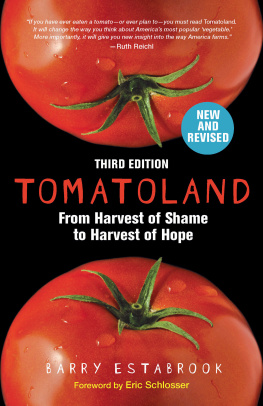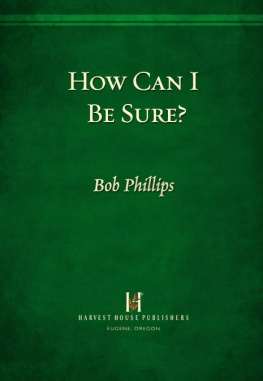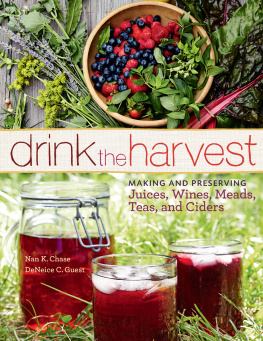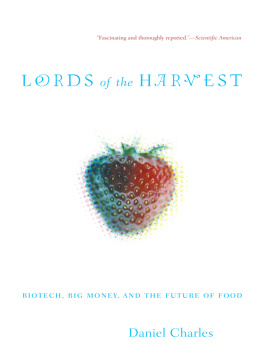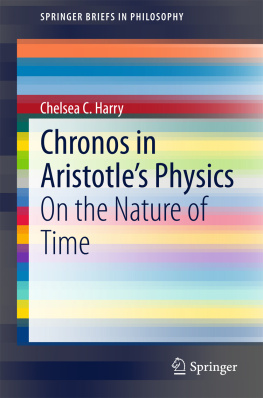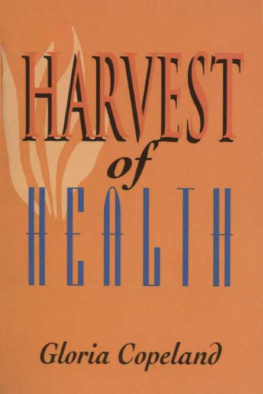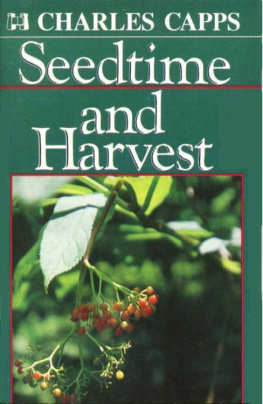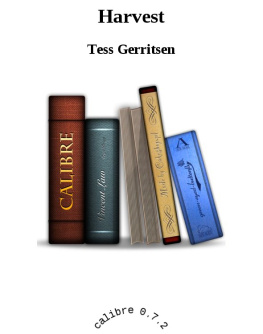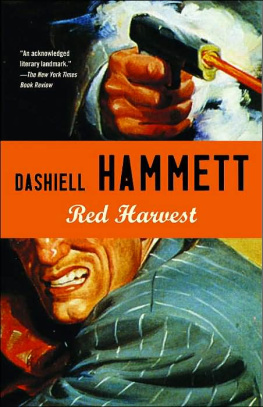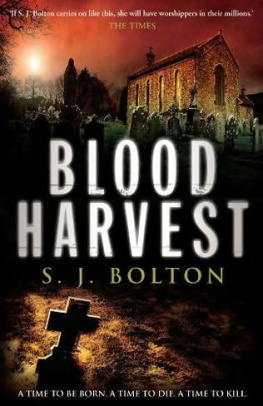Kumerdej - The Harvest of Chronos
Here you can read online Kumerdej - The Harvest of Chronos full text of the book (entire story) in english for free. Download pdf and epub, get meaning, cover and reviews about this ebook. year: 2017, publisher: Istros Books, genre: Art. Description of the work, (preface) as well as reviews are available. Best literature library LitArk.com created for fans of good reading and offers a wide selection of genres:
Romance novel
Science fiction
Adventure
Detective
Science
History
Home and family
Prose
Art
Politics
Computer
Non-fiction
Religion
Business
Children
Humor
Choose a favorite category and find really read worthwhile books. Enjoy immersion in the world of imagination, feel the emotions of the characters or learn something new for yourself, make an fascinating discovery.
The Harvest of Chronos: summary, description and annotation
We offer to read an annotation, description, summary or preface (depends on what the author of the book "The Harvest of Chronos" wrote himself). If you haven't found the necessary information about the book — write in the comments, we will try to find it.
The Harvest of Chronos — read online for free the complete book (whole text) full work
Below is the text of the book, divided by pages. System saving the place of the last page read, allows you to conveniently read the book "The Harvest of Chronos" online for free, without having to search again every time where you left off. Put a bookmark, and you can go to the page where you finished reading at any time.
Font size:
Interval:
Bookmark:
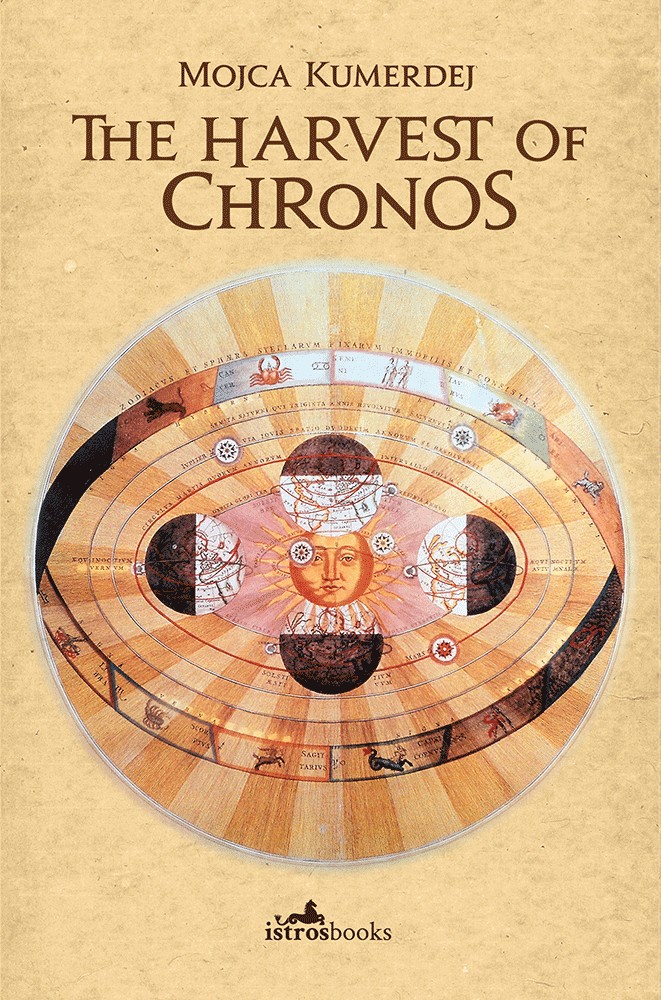
The Harvest of Chronos
Mojca Kumerdej
Translated from the Slovene by Rawley Grau
First published in 2017 by
I stros Books (in collaboration with Beletrina Academic Press)
London, United Kingdom
www.istrosbooks.com
Originally published in Slovene as Kronosova etev by Beletrina Academic Press, 2016
Mojca Kumerdej
The right of Mojca Kumerdej to be identified as the author of this work has been asserted in accordance with the Copyright, Designs and Patents Act, 1988.
Translation Rawley Grau
Edited by Stephen Watts
Cover design and typesetting: Davor Pukljak | www.frontispis.hr
ISBN:
978-1-908236-333 (printed edition)
978-1-908236-401 (e-book )
This Book is part of the EU co-funded project Stories that can Change the World in partnership with Beletrina Academic Press | www.beletrina.si

The European Commission support for the production of this publication does not constitute an endorsement of the contents which reflects the views only of the authors, and the Commission cannot be held responsible for any use which may be made of the information contained therein.
A Brief Note on Time and Place
Mojca Kumerdejs novel The Harvest of Chronos is set in the year 1600 during the Catholic Counter-Reformation in the territory of what is today the Republic of Slovenia an intersection of history and geography that may require some context for twenty-first-century readers.
Exactly five hundred years ago (almost to the day, as I write this) and eighty-three years before the novel begins, the German monk and theology professor Martin Luther, according to a famous but disputed legend, nailed his Ninety-five Theses on the door of a church in the Saxon town of Wittenberg, in northern Germany. The Theses laid out his objections to certain practices of the Roman Catholic Church, and their publication is generally considered the beginning of the Protestant Reformation, which over the following decades developed from a movement to reform the Catholic Church to the establishment of a number of breakaway churches with differing structures, practices, and doctrines.
Luther had published his Theses primarily to protest the Catholic practice of selling indulgences, that is, the idea that you could purchase a reduction in the time you or a loved one would have to spend in purgatory before being admitted to heaven. But other practices were equally abhorrent to Luther and his followers. Lutherans insisted on the importance of taking Holy Communion in both kinds, that is, with all communicants being given both bread and wine, as the body and blood of Christ. In the Catholic Church, however, the Lords Supper was offered to lay believers only in one kind: while the clergy took both wine and bread, the laity were only permitted to receive the bread, which was placed by the priest on the communicants tongue. But most importantly, Protestants rejected the idea of papal authority and, by extension, the authority of priests in general; they believed in the priesthood of all believers and elevated the Bible as the primary if not sole basis for doctrine and personal faith. Consequently, the translation of the Bible into the vernacular languages and the promotion of universal literacy were central priorities. At the same time, the emphasis on the individuals direct access to God meant a rejection of the role of the Virgin Mary and the saints as intercessors.
But the Protestants were also divided among themselves. Besides the Lutherans, the other major Protestant group were the followers of the Geneva-based theologian John Calvin, who most famously put forward the controversial doctrine of predestination, the belief that God has preordained some people for eternal life and others for eternal damnation. There were other sects as well, such as the Anabaptists and the Flacians (whose founder, Matthias Flacius, was a Croat from Istria, born Matija Vlai), as well as smaller, more radical groups, some of which appear in the novel as Leapers, Founders, and Ecstatics.
By the middle of the sixteenth century, Lutheranism had gained a strong foothold among the nobility and burghers in the Habsburg domain known as Inner Austria, in the south-eastern corner of the Holy Roman Empire. Squeezed between the Venetian Republic on the west and Hungary and the still-expanding Ottoman Empire on the east, Inner Austria comprised the Duchies of Carinthia, Styria, and Carniola, as well as the Princely County of Gorizia, the City of Trieste, and a large part of the Istrian Peninsula. Roughly a third of this territory was inhabited by speakers of the South Slavic language that today we call Slovene.
The main proponent of Lutheranism among Slovene speakers was Primo Trubar (15081586), who served as a Catholic priest in Carniola and Styria until 1548, when he was expelled from the region because of his Lutheran views. He fled to Germany, where he began publishing books in Slovene, most importantly, his Catechism , with explanations of the basic Lutheran doctrines as well as hymns and a litany for worship, and the Abecedarium , an ABC book for learning to read and write. Published in Tbingen in 1550, these were the first books ever to be printed in Slovene. Although Trubar also produced translations of the New Testament, it was his younger colleague, Jurij Dalmatin (c. 15471589), who translated the entire Bible into Slovene, which was printed in Wittenberg in 1583. Meanwhile, the Slovene Protestant preacher Adam Bohori (c. 15201598) wrote the first grammar for the language (1584) and devised the alphabet used by Trubar and Dalmatin (the Bohori script was eventually replaced in the mid-nineteenth century by the modern Slovene alphabet).
While it is impossible to overstate the importance of the Protestant Reformers role in the formation of the Slovene literary language, no less important was their contribution to the creation of the Slovene national identity. It is no accident that Trubar begins his Catechism with the words: For all Slovenes I ask grace, peace, mercy and the true knowledge of God through Jesus Christ. His appeal to all Slovenes vsem Slovencem is breathtaking: it is as if he is naming a people and thereby envisioning a nation, even if that nation would not be realized as political fact until hundreds of years later. While it would be wrong to view Mojca Kumerdejs novel as engaged in the formation of a national mythos her concerns are much broader than this the anxiety of an inchoate populace that, for good or for ill, is striving to define and assert its identity is a significant element in the matrix of power she describes.
The novel unfolds against the background of a new stage in the Catholic response to Protestantism in Inner Austria, when after decades of reluctant compromise with the powerful Lutheran elites in the noble and burgher classes (the Provincial Estates) a compromise marked by agreements such as the Peace of Augsburg (1555) and the Pacification of Bruck (1578), which assured the feudal gentry and the towns the right to choose their own religion the Catholic Church launched a ruthless crackdown, burning Protestant books, forcing conversions, and expelling anyone who refused to swear allegiance to the Church. These efforts were undertaken with the full support of the Prince of Inner Austria, Archduke Ferdinand II (15781637), a fervent Catholic whose later actions to impose his religion, first as King of Bohemia and then as Holy Roman Emperor, would eventually trigger the Thirty Years War (16181648), one of the longest and deadliest wars in European history. In the end, Protestantism was completely eradicated in the Slovene lands, with the exception of the Trans-Mura (Prekmurje) region, then in Hungary but now the north-eastern corner of Slovenia, where a significant part of the population has remained Lutheran.
Font size:
Interval:
Bookmark:
Similar books «The Harvest of Chronos»
Look at similar books to The Harvest of Chronos. We have selected literature similar in name and meaning in the hope of providing readers with more options to find new, interesting, not yet read works.
Discussion, reviews of the book The Harvest of Chronos and just readers' own opinions. Leave your comments, write what you think about the work, its meaning or the main characters. Specify what exactly you liked and what you didn't like, and why you think so.



